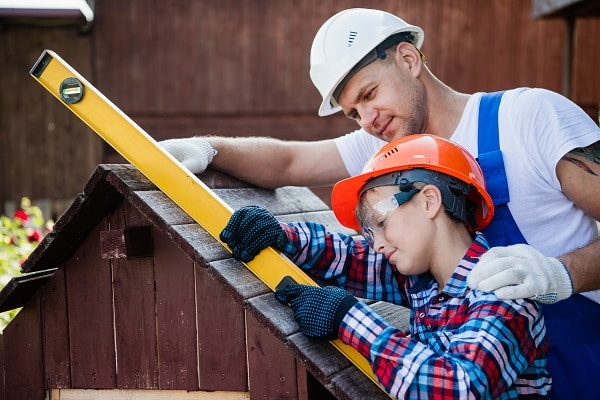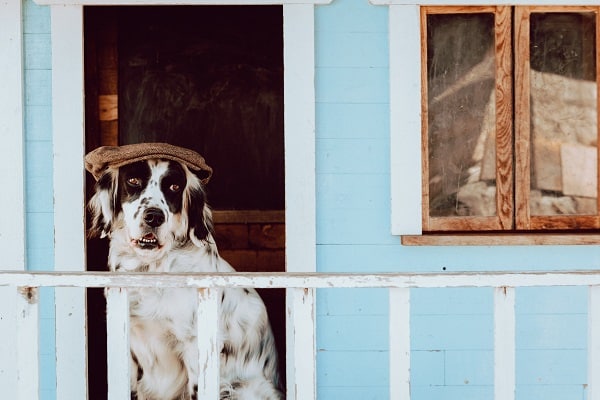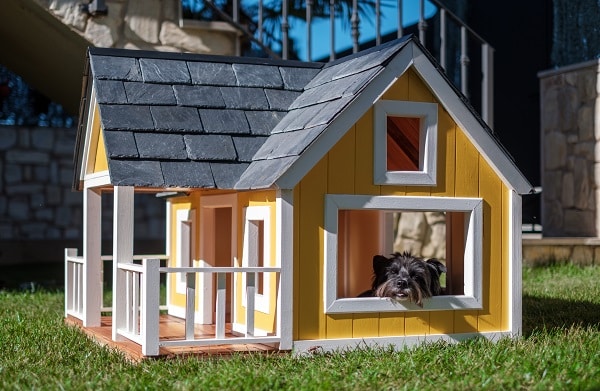Every dog, whether a pampered pooch or a hardy hound, deserves a space they can call their own. A dog house isn’t just a shelter; it’s a haven where your furry friend can feel safe, comfortable, and protected from the elements. Building the perfect dog house requires understanding your dog’s needs, choosing the right location, and gathering the right materials. This guide will give you a complete rundown of these essential steps to ensure your canine companion has the ideal home!
Contents
Understanding Your Dog’s Needs

The first step in building the perfect dog house is to understand your pet’s unique needs. Dogs, like humans, have preferences. Some dogs might prefer a cozy, enclosed space, while others might want a bit more room to stretch out. Consider the size of your dog; a Great Dane will have vastly different space requirements than a Chihuahua. Additionally, think about the climate you live in. If it’s predominantly hot, your dog will need ample ventilation. On the other hand, colder climates might necessitate insulated walls to keep your pet warm.
Another crucial aspect to consider is your dog’s habits. Does your dog love to lounge around, or is it always on the lookout, observing its surroundings? Some dogs appreciate a higher vantage point or windows to keep an eye on their territory. Understanding these habits will help you design a house your dog will love and use regularly.
Choosing The Right Location

Location is everything. Just as you wouldn’t want your home placed in an inconvenient or uncomfortable spot, the same goes for your dog’s house. Start by considering the proximity to your main house. Placing the dog house too far might make your pet feel isolated while placing it too close might not give them the sense of independence they sometimes need.
Another vital factor is the availability of shade. Dogs can get overheated quickly, so ensuring their house isn’t constantly under the scorching sun is essential. Look for a location that offers a good balance of sunlight and shade. Additionally, consider the direction of prevailing winds and potential flooding areas. A dog house should be placed in a spot where it’s protected from strong winds and elevated enough to avoid water logging during heavy rain.
Materials And Tools Required

Once you’ve understood your dog’s needs and chosen the ideal location, it’s time to gather your materials. The type of wood you choose is crucial. Cedar and redwood are excellent choices due to their natural resistance to decay and pests. They also provide good insulation against temperature extremes. Besides wood, you’ll need nails, screws, and other fasteners to hold everything together. Ensure these are of good quality to ensure the longevity of the dog house.
In terms of tools, the basics include a saw, hammer, measuring tape, and possibly a drill. If you’re planning to give the dog house a finish, gather paints or stains that are non-toxic and safe for pets. Remember, while aesthetics are essential, the safety and comfort of your dog should always be the priority. Always opt for materials that are durable, weather-resistant, and safe for your pet.
Laying The Foundation

The foundation of any structure is its backbone, and the same holds true for a dog house. A strong foundation ensures the longevity of the house and provides a level surface for your dog to rest on. There are several options to consider. A concrete foundation is sturdy and durable, but it can be cold during the winter months. If you opt for concrete, consider placing a layer of insulation or a raised bed to keep your dog warm.
Another popular choice is a raised wooden platform. This type of foundation keeps the dog house elevated, ensuring it stays dry during rainy seasons. It also provides a barrier against pests and insects. Gravel is another option, especially if you’re looking for good drainage. Whichever foundation you choose, ensure it’s level and stable, providing a solid base for the rest of the construction.
Constructing The Walls

The walls of the dog house are not just barriers; they’re protective shields against external elements. When constructing the walls, accurate measurements are crucial. Measure twice and cut once. Ensure the walls are high enough for your dog to stand and turn comfortably. Insulation is another key factor, especially if you live in colder regions. Insulated walls will keep your dog warm during winter and cool during summer.
Ventilation is equally important. While you want the dog house to be cozy, it shouldn’t be stuffy. Consider adding small windows or vents to allow for air circulation. This will ensure that your dog has fresh air and can also help in reducing humidity inside the house, especially during warmer months. Remember, the walls should be sturdy and robust, able to withstand the elements, and provide a safe space for your pet.
Roofing Essentials

A roof is more than just a cover; it’s the primary defense against rain, snow, and the scorching sun. When deciding on the design, consider whether you want a sloped or flat roof. Sloped roofs are excellent for areas with heavy rainfall or snow, as they prevent water accumulation. Materials matter too. While shingles provide a traditional look, metal or wooden roofs can be more durable and easier to install.
Waterproofing is a must. Ensure that the roof has a proper seal to prevent any leaks. This will keep the interior dry and comfortable for your dog. Additionally, consider adding an overhang to the roof. This not only adds to the aesthetic appeal but also provides additional shade and protection from rain.
Door And Entryway

The door is the gateway to your dog’s personal space. When designing the entryway, size is paramount. The door should be large enough for your dog to enter and exit without any discomfort but not too large that it lets in too much cold air during winter. Furthermore, an elevated threshold can be a good idea to prevent water from entering the dog’s house during rain.
Many dog owners also opt for flap doors made of vinyl or rubber. These flap doors act as insulators, keeping the warmth in during cold months and the heat out during summer. They also provide a sense of privacy for your dog. However, ensure the flap is easy for your dog to push open. The entryway should be inviting, easy to access, and provide a sense of security for your pet.
Interior Comforts

The interior of the dog house is where your furry friend will spend a significant amount of time, so comfort is paramount. Start with bedding. Depending on your dog’s preference and the climate, you can opt for raised beds, plush cushions, or simple mats. Raised beds are especially beneficial in colder climates as they keep the dog off the cold ground. Cushions and mats provide a soft surface for your dog to relax on.
Toys and chewables can also be added to the interior. These not only entertain your dog but also provide a sense of familiarity. If you live in an extremely cold region, consider adding heating pads or a heated bed. However, always ensure that any electrical components are safely installed and out of your dog’s reach to prevent any accidents.
Safety Precautions

Building a dog house is not just about aesthetics and comfort; safety is paramount. Begin by inspecting the house for any sharp edges or protruding nails that could harm your dog. Sand down any rough surfaces to prevent splinters. The stability of the dog house is also crucial. Ensure that it’s sturdy enough to withstand strong winds and won’t topple over if your dog jumps on it or leans against it.
When painting or staining the dog house, always opt for non-toxic, pet-safe products. Dogs often chew on things, and you wouldn’t want them ingesting harmful chemicals. Additionally, ensure that the house has adequate ventilation. A stuffy dog house can lead to respiratory issues. Always prioritize your dog’s safety and well-being in every step of the construction process.
You’re Ready To Build The Perfect Dog House!
Building the perfect dog house is a labor of love, a testament to the bond between a pet and its owner. While the process involves careful planning, choosing the right materials, and ensuring safety, the end result is a haven for your furry friend. A well-constructed dog house not only provides shelter but also a sense of belonging. As you embark on this DIY journey, always prioritize your dog’s needs and comfort. After all, this is more than just a structure; it’s a home where memories are made, tails are wagged, and unconditional love is shared!



